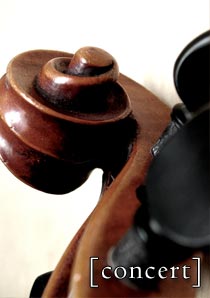Musica Universalis
| Year Composed: | 2017 |
| Instrumentation: | fl/a.fl/picc, cl/Ebcl/bcl, piano |
| Duration | 15 minutes |
| I | Frozen Fire |
| II | Singularity |
| III | The End of Eternity |
| IV | The Beginning of Infinity |
Program Notes
Musica Universalis was conceived as an attempt to bridge the gulf between scientific theory and general knowledge via a ‘pure’ musical discourse—ie. one independent of visuals, narration, or theatrics. The title is a reference to an ancient paradigm where astronomical phenomena was seen as the manifestation of a deeper, celestial harmony: the so-called “Music of the Spheres.” As a composer who nearly pursued an undergraduate degree in astrophysics with the intention of studying cosmology, I found myself inherently drawn to a perspective, archaic as it may be, where music and nature were so self-evidently connected. Romantic as it may seem, the notion that our scientific and artistic pursuits are deeply intertwined expressions of human endeavour is an encouraging one, especially in a world that is becoming ever more specialized, not to mention increasingly divisive. I believe our search for knowledge is nested within a deeper search for meaning, and that music—with its ancient roots in human history—plays a vital, parallel role in that search. As such, Musica Universalis is concerned less with reproducing the specific mechanics associated with any scientific concept than with capturing the overarching spirit of cosmology and, hopefully, deepening our appreciation of the cosmos and our place within it.Each of the work’s four movements aims to musically dramatize a particular aspect of cosmological inquiry. The first movement, “Frozen Fire,” draws inspiration from Einstein’s discovery of mass-energy equivalence, famously described by the equation E=mc2. The flute and clarinet lines morph into one another seamlessly; as the movement unfolds they begin to chase one another, necessitating quick instrument exchanges (the flute doubles on alto flute and piccolo, while the clarinet doubles on bass and E-flat clarinet) in order to match timbre. The piano part is comprised of rapid, improvisatory patterns that form a dense backdrop to the long, sustained lines of the flute and clarinet—a musical metaphor for ‘frozen energy’ (matter). A cataclysmic climax, signifying the birth of the atomic bomb—an invention made only possible by the application of this equation—brings the movement to a startlingly bleak close.
The brief but furious second movement (“Singularity”) attempts to sonically depict the effects of a black hole (an object with a gravitational field so powerful that not even light can escape.) A volley of sixteenth notes gradually converges on a single pitch—the ‘singularity’—which obliterates all other pitches.
The third and longest movement, “The End of Eternity,” was inspired by Isaac Newton’s deterministic theories of time and motion. He envisioned the universe as an immense clockwork mechanism, where every action is preceded by a logical cause and where time is constant—a common-sense view of the world that has since been rendered obsolete by the revolutionary discoveries of Albert Einstein. My solution to musically representing such abstractions was to distill the chronology of Western music (selectively, of course) into a single movement: a metaphor for the seemingly inevitable march of time. A constant, ticking pulse, like that of a clock—each precisely one second long, and played by all three instruments at various stages of the movement—underlies a minor-key musical subject that is transformed across time. Following a strict, fugal introduction in the style of Bach (whose life overalpped with Newton's, making him the logical starting point of this journey), the subject gradually morphs into a sound-world reminiscent of the Romantic period, then played backwards (and upside down!) during a Debussy-esque interlude. A reprise of the ticking pulse brings us briefly into a series of fragmented vignttes, recalling the Expressionism of the early twentieth century. Finally, repetitious patterns in the piano signify the arrival of Minimalism (and in particular the music of Steve Reich), while the flute and clarinet dance atop, exuberant and jazzy.
Towards the end of the movement, the steady pulse of the ticking-clock wavers and dissipates, and the music picks up considerable momentum, eventually exploding into a climactic A major chord which launches the fourth movement postlude (“The Beginning of Infinity”.) Improvisatory piano figures, freed at last from the shackles of 'conventional time,' suggest a brave new frontier of quantum possibility, where the future is fundamentally uncertain, and where the conscious observer—you, the audience!—plays a critical role in the unfolding of reality.
The titles of the final two movements were inspired by Isaac Asimov’s novel The End of Eternity, which is both a labyrinthine investigation into the possibilities of time travel and an astute commentary on the paradoxical nature of the human condition. I hope that this work will serve, in its own abstract way, not only as a tribute to these themes, but as a reflection of my own awe and reverence for the cosmos and the complex beings that inhabit it.
Performances
- September 26, 2017 - Trio D'Argento. Gallery 345, Toronto.
- October 4, 2017 - Trio D'Argento. Kitchener Waterloo Chamber Music Series, Kitchener.
- October 16, 2017 - Trio D'Argento. Maison de la Culture, Montreal.
- November 2, 2017 - Trio D'Argento. Four Seasons Centre Atrium, Toronto.
- November 24, 2018 - Trio D'Argento. Yukon Arts Centre, Whitehorse; YT.
- November 29, 2018 - Trio D'Argento. North Okanagan Chamber Concert Association, Vernon; BC.
- November 30, 2018 - Trio D'Argento. Kicking Horse Culture, Golden; BC.
Commissions and Awards
- Commissioned by Trio D'Argento, with generous assistance from the Ontario Arts Council.

